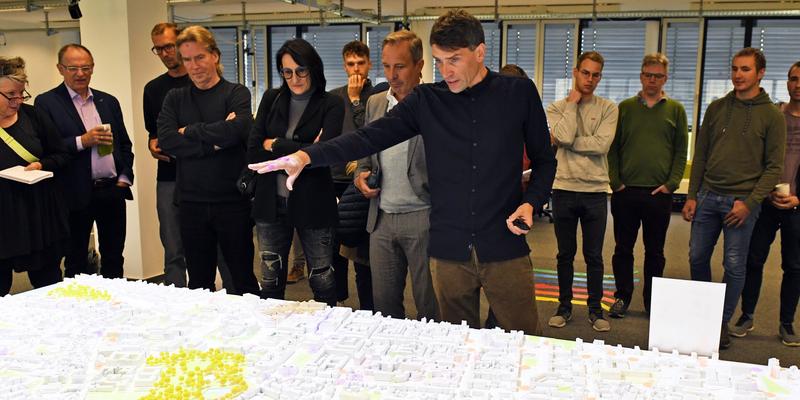Communication in the Event of a Crisis
Digital Advertising Pillars will provide Information for the Population
Digital Advertising Pillars will provide Information for the Population

There is no doubt that Ernst Litfass would have been pleased with how his invention is developing: Not only do the advertising pillars he invented in the mid-19th century continue to stand in large numbers in all major cities, but they are now also transforming into state-of-the-art multifunctional systems that carry far more than simple advertising to the public. In the future, the Litfaßsäule 4.0 will be able to operate self-sufficiently as a digital communication unit using solar power, even during a large-scale power outage, and transmit important information to the public.
The scientists from the LOEWE center emergenCITY have found the ideal partner to transfer their research project into practice: STRÖER Media Deutschland GmbH is - among others - the marketer of around 25,000 advertising pillars in Germany. On Monday, they signed an cooperation agreement for the development of a prototype of the digital advertising pillar, an event accompanied by a presentation of the project. “When digital meets crisis, we are not adequately prepared,” Professor Matthias Hollick, scientific coordinator of emergenCITY, opend his presentation with a warning. The resilience of the increasingly digitally networked infrastructure in extreme situations is therefore a central research goal.
The concept of the Litfaßsäule 4.0 is one of the current answers to the question of how communication between authorities and citizens can be maintained in an emergency, thus strengthening the resilience of digital cities. Hollick emphasized that emergenCITY does not conduct research in an intellectual vacuum, but for the benefit of the population. In their presentations, he as well as STRÖER CEO Hermann Meyersick and emergenCITY architect Dr. Joachim Schulze highlighted the numerous advantages of advertising pillars as a means of communication. One of them is their high acceptance as a well-known, integral part of the cityscape: “People only trust a source of information that they accept,” Joachim Schulze emphasized, naming social media as a counterexample, which rather tend to be distrusted in case of doubt.
Additionally, the location in highly frequented places, the height of the pillars and their round shape as well as the even distribution all over the city are important factors: In Darmstadt, for example, there are around 200 advertising pillars. Schulze illustrated their range and almost uninterrupted information radius with a three-dimensional model of the city center.
Furthermore, the pillars are stable, offer plenty of space and do not require any additional infrastructure. For their conversion into a self-sufficient digital medium, solar cells and a communication unit are to be installed on the approximately two-square-meter roof area; a battery storage can be placed inside the pillar. A digital ticker around the top will then display important information in large, luminous letters in the event of a crisis. Meyersick pointed out that the system could also conceivably be supplemented by acoustic warnings using a loudspeaker. It will take about a year to complete the first prototype of the new advertising pillar. Its presentation is planned as part of the emergenCITY mission Heinerblock together with the city of Darmstadt. According to the will of the Darmstadt city councilors, the Heinerblock is supposed to provide more quality of life in the future as a traffic-calmed neighborhood. The transformation is scientifically accompanied by emergenCITY.
Already this first presentation of the cooperation project around the Litfaßsäule 4.0 met with great media response. FFH-Radio published reported a statement by Meyersick. Further articles were published in the Darmstädter Echo, in the Frankfurter Rundschau and in the FAZ. All media coverage is in German language.
Text by Gerd Keim, edited and translated by jd